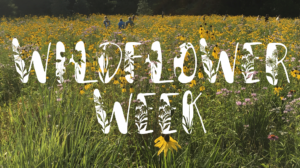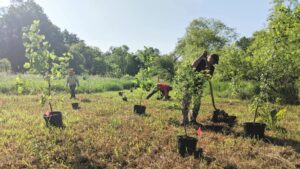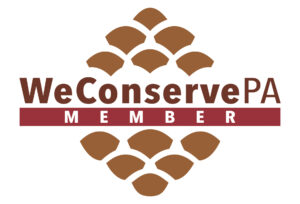Flooding 102
Last week we looked at the basics of flooding, learning about what constitutes a flood and how floods are measured. This week, we wanted to dive deeper into flooding and explore the causes of floods and how flooding in our area looks different today than it did 20 years ago. If you didn’t get a chance to read our last article, check it out here.
Where does flooding happen?
When we think about flooding, we are often concerned less by the amount of water moving through a stream and more by the land that becomes inundated with water. The area covered by water during a flood is called a floodplain. Floodplains tend to be flat, low-lying areas adjacent to streams and rivers. Not all floods will cover the entire floodplain, and some floods are large enough to reach areas above the usual floodplain. Since the size of a flood impacts the area that will be flooded, we can expect that a 100-year floodplain, the area that will be inundated during a 100-year flood, to be smaller than a 500-year floodplain.
How much rain do you need to cause a flood?
The amount of rain needed to cause a flood depends on many factors. The amount of rain that falls during a storm is not the same as the amount of water that reaches a stream. When water falls in a watershed, it can either be absorbed into the soil, a process called infiltration, or it can flow over the ground into the stream, a process called runoff. In general, more runoff leads to more flooding.
A big factor that determines the amount of runoff from a rainfall event is the amount of impervious surface in a watershed, the area that feeds into a stream. An impervious surface is any feature that blocks water from infiltrating into the soil, such as buildings, roads, parking lots, driveways, sidewalks. Watersheds with lots of impervious surfaces will have more runoff than watersheds without impervious surfaces. Consequently, more water from a storm will reach the stream in watersheds with more impervious surface cover, causing greater flooding than if there were less impervious surface cover.
Recent weather conditions also impact the amount of rain needed to cause a flood. Soils can only absorb so much water before they are saturated and cannot absorb any more. If a storm occurs after a few rainy days, when the soils are nearly saturated, less water will infiltrate and more water will run off, causing a larger flood than if the same storm occurred during a dry period.
The rate of rainfall also impacts flooding. Storms that dump a few inches of rain in an hour will cause more flooding than storms that have the same amount of rain over several hours. Infiltration of rainwater into soil takes time, so more water will be able to infiltrate when a storm occurs over a longer period of time, resulting in less runoff and less flooding.
What is the difference between a flood and a flash flood?
Flash floods are a type of flood that occur quickly, within a few minutes to a few hours of a heavy rainfall. They are marked by a sudden increase in water level and are most common in developed areas with lots of impervious surfaces where there is little infiltration. Flash floods are generally considered the most dangerous type of flood because they can occur with little warning, leaving people little time to evacuate the floodplain.
It seems like we are having 100-year floods every year, why is that?
In our last post, we discussed that a 100-year-flood was a flood that had a 1% chance of occurring in any given year. However, changes in our watersheds and in our climate are altering flood patterns in our area.
The amount of impervious surface in a watershed is a major factor in determining how big a flood will be after any given rainstorm. As our area becomes more developed and more impervious surfaces are put in, it takes less and less rain to cause a flood.
Climate change impacts the frequency and intensity of storms and resulting floods in our area. Researchers predict that a warming planet will cause larger and more frequent hurricanes to form in the Atlantic Ocean. While the brunt of the damage from these storms will be borne by coastal communities, we can expect to see more of these storms reaching our areas, leading to large floods such as those caused by Tropical Storm Isaias in 2020, Tropical Storm Sandy in 2012, Hurricane Irene in 2011, and most recently, Hurricane Ida.
In addition to seeing the consequences of more severe coastal storms, our area is predicted to see an increase in annual precipitation by 2050. As a result, we can expect to have more intense storms more frequently. The increase in intensity and frequency of these storms, combined with the increase in impervious surfaces in our watersheds, means that what was once a 500-year flood may now be considered a 100-year flood and what was once a 100-year flood may now be a 50-year or a 20-year flood.
What is Willistown Conservation Trust doing to reduce flooding? What can I do?
Protecting land from development is one of the best ways to combat flooding. Land that is undeveloped allows far more infiltration than land that is developed, reducing the amount of runoff that reaches our streams after a rainstorm and the resultant floods.
In addition, the Watershed Protection Program has planted over 800 trees along a floodplain at Ashbridge Preserve. Planting trees helps increase the amount of water that infiltrates into soil and will eventually reduce flooding downstream.
You can help too! Letting your grass grow a little taller before mowing is a great way to increase the amount of water that your yard can absorb, thereby reducing runoff. Adding a rain garden with native plants to your yard reduces the amount of water that runs off into streams. You could also add a rain barrel to your yard and collect rainwater for later use in your garden or elsewhere. Any action you take that reduces the amount of runoff reaching streams will make a difference in flooding for all those living downstream.
To learn even more about flooding, check out these resources:
- See if you live in a floodplain using FEMA’s interactive Flood Map: FEMA Flood Map Service Center: Search By Address
- Learn more about the impacts of climate change on Pennsylvania: Pennsylvania Climate Impacts Assessment 2021
- Explore how you can reduce runoff from your home: What You Can Do to Soak Up the Rain





